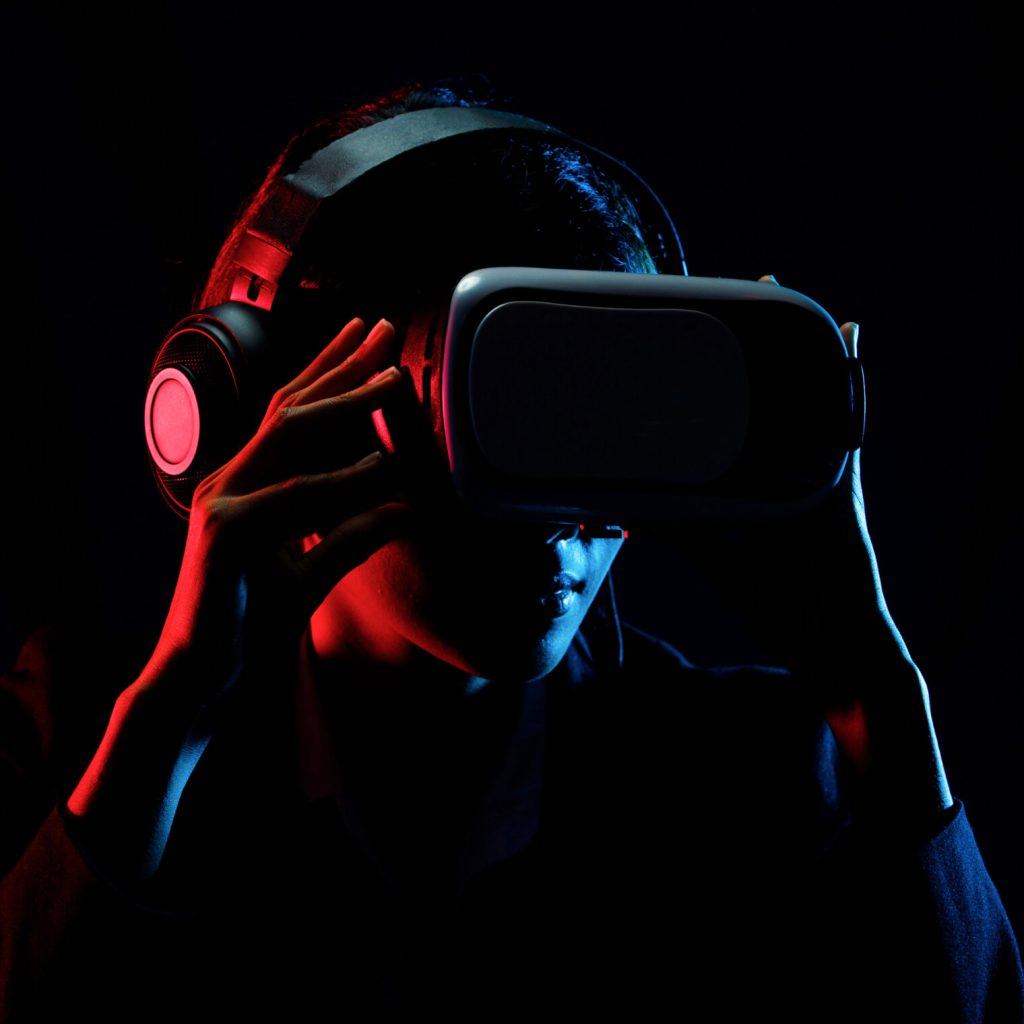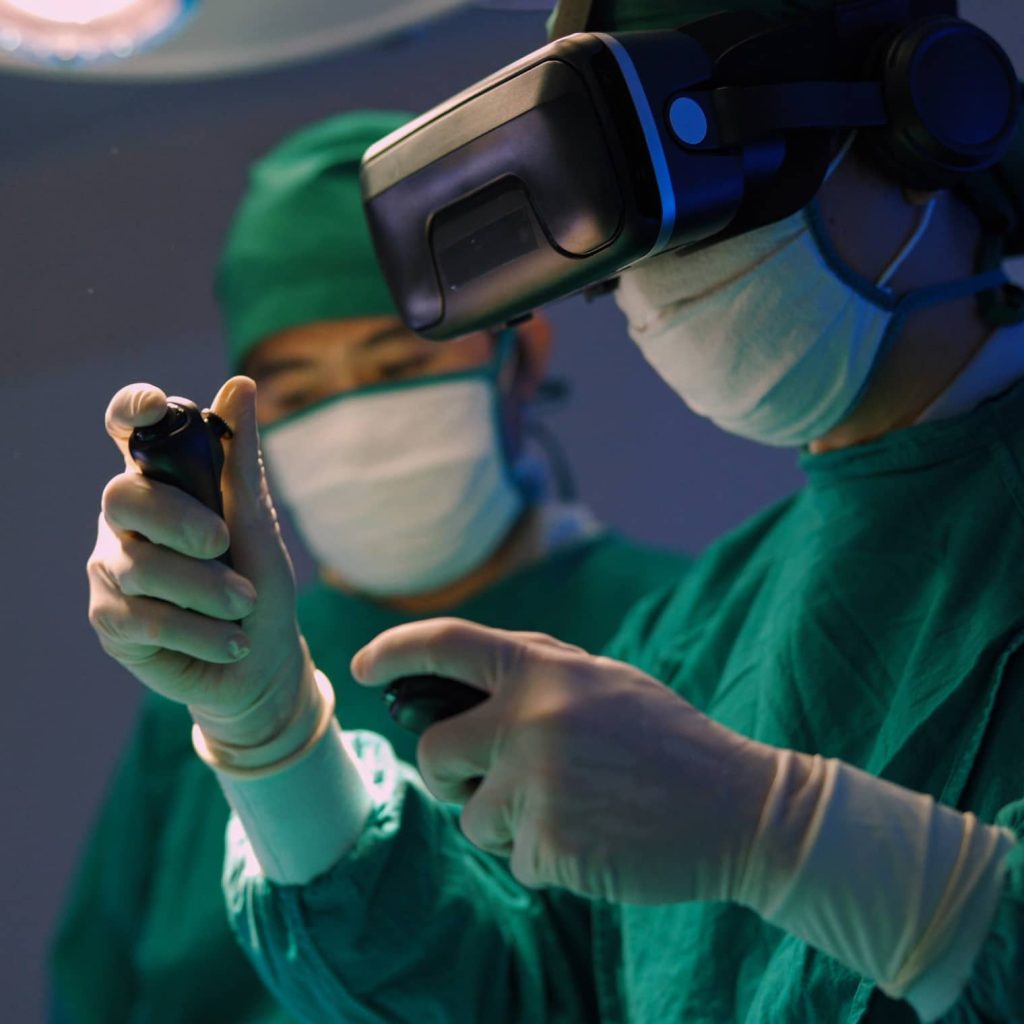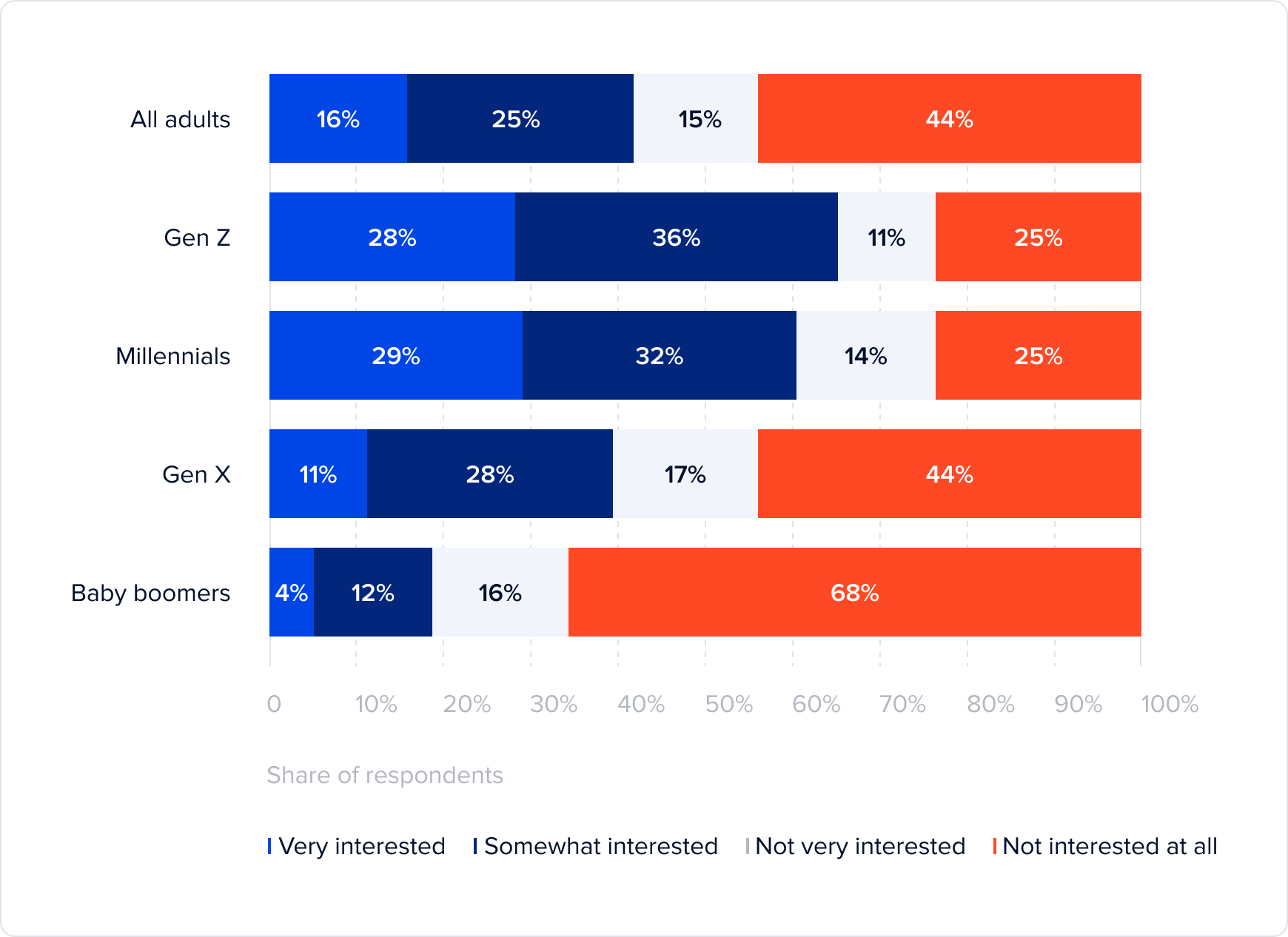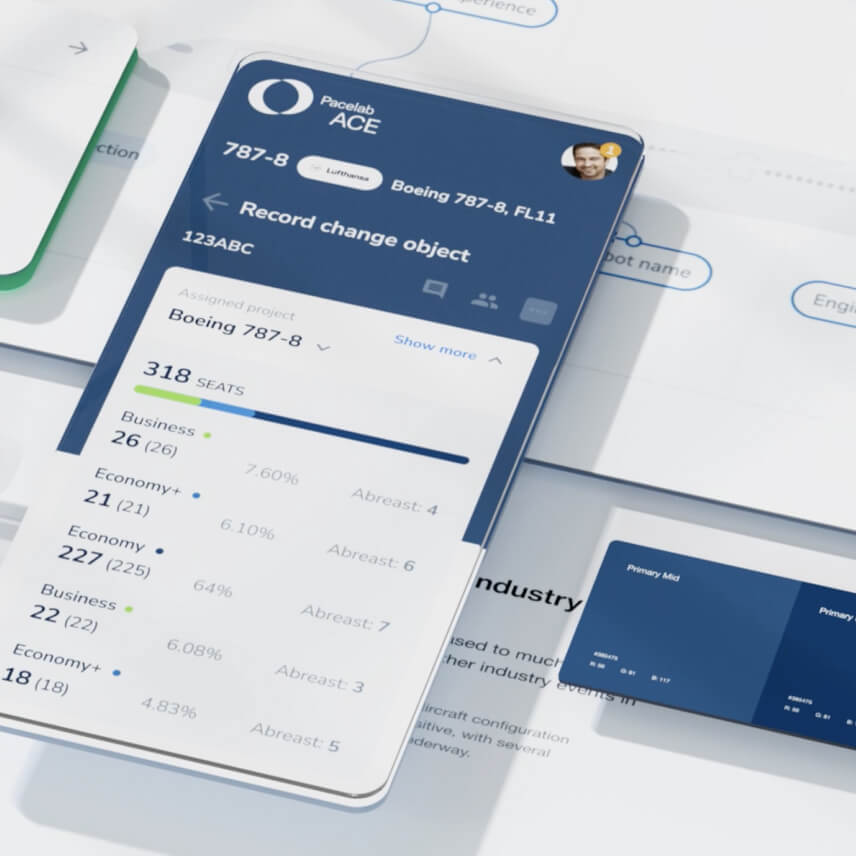What is metaverse?
Metaverse is a blockchain-based shared virtual space that allows people to interact with and explore a virtual world. It is not owned by a single vendor and is not device-dependent. Decentralised metaverse is enabled by digital currencies and NFTs and is powered by advanced technologies like artificial intelligence (AI), virtual reality, blockchain, etc. Combining these technologies allows users to create digital avatars or representations of themselves and explore the world around them.
Moreover, users can do anything within that world that they could do in real life—go shopping or get a job, etc. The metaverse is also home to many virtual businesses and organisations and there is a bunch of metaverse use cases and applications worth paying attention to, we will cover them below.
The metaverse is a term that has been around for some time. The first person to describe this notion was Neal Stephenson in his novel Snow Crash in 1992. But recent advances in technology have made a shared virtual space more feasible than ever before. However, the metaverse concept has taken off recently as virtual reality (VR) and augmented reality (AR) technologies are adopted more broadly, 5G networks develop faster, and people got a better sense of how it could work in their lives during the Covid-19 pandemic when many had to work remotely. All this, combined with Facebook getting into the metaverse business recently, has caught the attention of investors and ordinary Internet users worldwide.
Metaverse market insights
Today, we see the emergence of metaverse virtual worlds that can be accessed from any device, including smartphones, tablets, laptops, and PCs. We've also seen leading companies like Google and Microsoft take steps towards creating their meta-verses. Big brands started using VR app development services even more actively with an aim to offer their customers new levels of interaction and engagement.
The metaverse market is expected to grow significantly in the next few years. According to Gartner, 25% of people will spend at least one hour daily in the metaverse by 2026.
The metaverse market is growing due to increased interest from investors and entrepreneurs. Companies are clamouring to get a foothold in this new landscape; for example, Nike collaborated with Roblox to create their virtual world, "Nikeland."
The increasing demand for advanced extended reality (XR) devices globally from small to large organisations and individual consumers also promotes market growth.
Key technologies facilitating metaverse development
In recent years, the technology industry has significantly progressed toward developing the infrastructure needed to support a fully realised metaverse. Challenges remain, but advances in graphics processing units (GPUs), photorealistic 3D engines, volumetric video, blockchain technology, artificial intelligence, cloud computing, and 5G networks are helping to progress toward this goal.
But one development stands out above all others when it comes to the human experience: immersive reality technologies. These include virtual reality (VR), augmented reality (AR), and mixed reality (MR), which have the potential to redefine computing as we know it.
Considering that the metaverse is a virtual space that can be accessed using a headset and other equipment. It is expected to manifest primarily through virtual reality technology in the next few years. Recent announcements by Meta Platforms, Microsoft, and Sony suggest that headsets like Meta Quest or Sony's PSVR will be consumer choices to navigate interactive and social 3D virtual environments.
Virtual reality—the first step towards the metaverse
The metaverse attempts to create a fully immersive and dynamic 3D virtual world. Experts agree that this is key to creating an engaging experience and retaining users. To do that, it will need VR technologies that can ensure the effect of being present.
VR refers to 3D modelling and simulation replicating a real environment or an imaginary world, allowing users to have an immersive digital experience similar to real-world experiences. It is created by software, hardware, audio and visual sensations and other devices such as VR headsets/helmets, gloves and body detectors outfitted with sense detectors.
By combining VR and metaverse technology, people can visit work and school, watch concerts, go shopping, and play games in a completely new way. In the future, Metaverse VR headsets may be used to purchase products, collaborate with colleagues, and perform more tasks typically performed with smartphones' help.
Explaining the difference between virtual reality and metaverse
The terms VR and metaverse are often used interchangeably, but they are very different. Metaverse is a broader term encompassing VR, one of several critical elements of the metaverse. VR establishes a more streamlined communication in the virtual world, enhancing the sense of telepresence.
On the other hand, metaverse offers a shared and immersive digital environment. It enables people to communicate digitally and blurs the line between the virtual and physical world while striving to ensure transparency and security.
Augmented reality in the context of the metaverse
AR is a cutting-edge technology that allows adding additional layers of information to the real world. For example, audio and video information can intensify users' experiences. Companies around the world already use AR for a variety of purposes, from marketing opportunities like product promotion and advertising campaigns to data collection.
AR solutions for metaverse have the potential to merge the physical and digital world. AR-powered technologies allow users to view their surroundings with an extra dimension, making virtual changes to the real world using only their smartphones and smart glasses. By adding images, sounds, texts or GPS data, AR devices can change the way users perceive their environment and create a more immersive experience.
AR technique can convince metaverse users' brains that an element exists in their environment. AR helps metaverse technology improve the human experience by bringing the virtual world into reality instead of replacing it.
Web 3.0 and the metaverse
Web 3.0 is the next generation of the internet, a decentralised system that allows users to control their data and engage in peer-to-peer interactions. The metaverse is a virtual world where people can interact with each other and share information in real-time.
The two concepts have much in common. Both are based on open standards and protocols that allow users to interact on a peer-to-peer basis without relying on third parties. The difference is that the metaverse focuses on building a community of people with similar interests. At the same time, web 3.0 aims to provide access to all information regardless of whether it's commercially available.
Web 3.0 complements the metaverse because it provides the infrastructure it will need to function. Additionally, Web 3.0 will allow users to interact with each other more naturally through avatars and other digital representations of themselves. Finally, Web 3.0 will provide the ability to store and retrieve data more efficiently, which will be essential for the metaverse.

The current and potential metaverse use cases
Companies in many sectors are already reaping the benefits of metaverse use cases, but even greater potential lies ahead. Here are some current and potential use cases a business can explore with metaverse technology.
Remote virtual office
The workplace has changed a lot in the last few years, and the pandemic has only accelerated this trend. Many companies have allowed or even encouraged their employees to work from home. And while this has a lot of advantages, it also has some challenges.
One of the biggest challenges of remote work is staying connected with your team and maintaining productivity. Metaverse can help with both of these things. Metaverse can be used for various purposes, including virtual collaboration, team-building exercises, and much more.
Nowadays, work meetings are usually held online via Microsoft Teams or Zoom. However, metaverse technology can help create a virtual office space for your team so everyone can meet and work together in real-time, regardless of location. It can help to improve communication and collaboration and make it easier to stay on top of projects.
Because metaverse provides the 3D environment, it also could add some fun and excitement to employees' workday. With customisable digital avatars, employees could visit a virtual meeting room, walk up to a virtual help desk, have a digital water cooler chat, or relax with colleagues in a networking lounge.
For example, Vice Media Group has teamed up with Bjarke Ingels Group to create "Viceverse", a digital headquarters in the metaverse. This virtual office allows for meetings, briefings, presentations and demonstrations of metaworld experiments, as well as experimenting with NFTs and Web 3.0.
Digital learning space
In the educational realm, metaverse can be used for distance learning and interactive educational experiences. Regarding professional training, metaverse can create an immersive learning environment to help learners absorb information more effectively. In addition, metaverse-based learning can be accelerated since learners can explore virtual worlds at their own pace and revisit concepts as needed.
One of the benefits of using VR and metaverse for virtual training is that learners can be exposed to realistic scenarios. For example, in a healthcare simulation, learners can practise treating patients in a safe and controlled environment. Such exposure can help professionals become more comfortable with procedures and protocols before facing them in the real world.
Another benefit of using virtual space for learning is that learners can receive real-time feedback. This feedback can help learners improve their skills and make the most of their training time. Virtual learning can also help establish effective communication by eliminating the language barrier. It could help people from different countries to study in a single digital space without social or linguistic complications.
For instance, the Korea Advanced Institute of Science and Technology is planning to launch a virtual campus in September 2023. Metaverse presents the opportunity to make education more inclusive and the university's reach.
Virtual tourism
The tourism industry has been one of the hardest-hit sectors during the COVID-19. However, there are other vulnerabilities besides physical restrictions imposed by the pandemic. For instance, as global warming worries rise and widen, and more action is required, people could focus on digital rather than real-world travel.
With VR headsets, virtual tours, and 360-degree videos, today's travel & tourism industry has already entered the digital space. Although people are unlikely to stop taking real trips, they will continue to enrich their in-real-life travels with virtual ones, and a metaverse will only enhance such experiences.
Metaverse not only provides virtual tours to real-world cities or digital representations of real estate but could be used to visit simulations of famous landmarks and buildings in their original condition. Moreover, digital avatars allow having a digital travelling experience in the metaverse as interactive as in the physical world. Users can form close relationships in a virtual environment since they can talk, move together as a group, and enjoy a shared experience.
For example, South Korea will invest $186.7 million into the development of the metaverse ecosystem. Seoul will be the first city to enter the metaverse with their new project, "Metaverse Seoul". This project's virtual tourism services will let locals and international visitors pay a visit to current attractions and historical recreations from the comfort of their homes.
Metaverse entertainment
Metaverse is the future of online entertainment. From concerts, shows and sports to online gaming and social media platforms, all of this is a part of your metaverse entertainment.
These events are often more immersive and interactive than real-world equivalents, giving fans a more personal experience. For example, at a digital concert, users could choose a view of the stage or even be allowed to meet the artist in person.
In a metaverse virtual sports arena, users can use digital avatars to buy and wear merchandise of favourite clubs and communicate and watch games and events together. With multi-view camera technology, users could enter the sports field, walk alongside the players, or join the football cheerleaders.
Truist Park, the baseball stadium in Atlanta, opened in the metaverse and is ready to host events. With a sound system that reproduces sound from Hartsfield Airport and "Take Me Out to the Ball Game" playing in the background, users will feel like they are at the park.
Online gaming
The gaming industry is one of the driving forces behind the development and implementation of the metaverse. Gaming companies are investing heavily in research and development to create new and innovative ways to bring games to the metaverse.
Metaverse games offer players a more immersive and realistic gaming experience, thus becoming increasingly popular. Metaverse projects are vital for the new generation of play-to-earn games. By playing metaverse NFT or blockchain games, players can acquire different in-game collectables to trade with other participants or in external marketplaces.
Moreover, metaverse games' realistic content gives companies an additional platform for unlocking marketing prospects. Ads in the metaverse are unobtrusive, appearing in natural places like game billboards or character clothing. This offers brands excellent exposure and opportunities for product placement in the gaming environment.
Social media platforms
The metaverse technology will change social networks as we know them. Social media platforms are evolving from a two-dimensional ecosystem into a metaverse digital world. Unlike other messaging platforms and social media, the metaverse offers users a much deeper level of immersion that feels almost like in-person communication.
Facebook and other social media companies are expanding into the metaverse. For example, Tinder has introduced new features, like "Swipe Night" and "Explore," developing its app with the metaverse's digital avatars. Users can find new friends and virtually dance using an avatar. You can find even more interesting applications of metaverse in our latest article: Exploring the Business Potential of Metaverse With Meta Art Gallery Prototype.
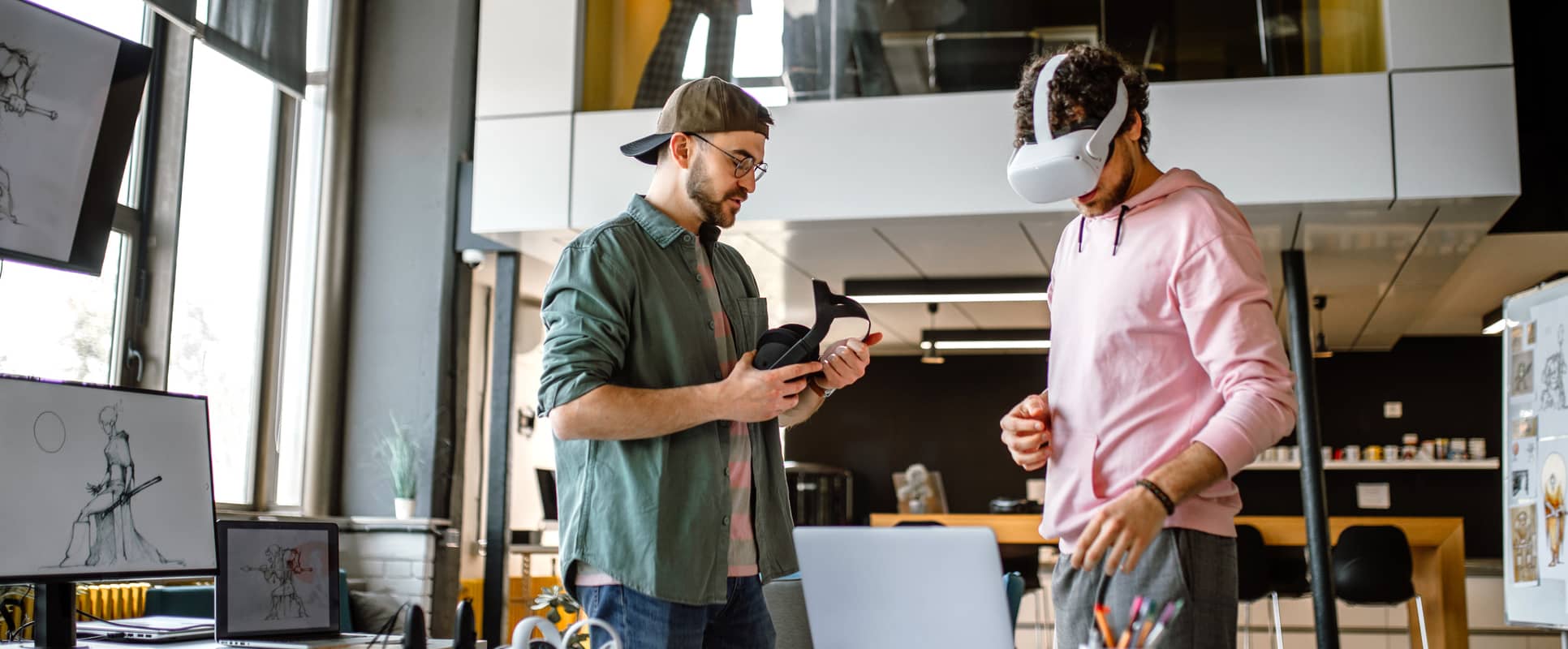
Get your business into the metaverse with immersive technologies
Virtual reality is the gateway into the metaverse—a computer-simulated world where people can interact with others around the globe. Today, many companies use virtual reality as part of their business strategy. By familiarising themselves with this technology through VR content, companies are helping themselves prepare for a new era in which computer-simulated environments are commonplace.
If you're interested in getting your business into the metaverse, here's a step-by-step process of getting started with VR:
Step 1: Define VR use cases with the biggest business potential
Identify how you can use VR to benefit your processes. Training and onboarding programs can be enhanced with VR. Creating digital ads enhanced with VR elements could present wider marketing opportunities for a business. The use cases are diverse, so, consider starting with a small project in your company. The best practice is to develop a PoC to validate your idea before you make a major investment.
Step 2: Look for an experienced VR partner
If you plan to use the help of an external technology partner to develop your solution, it is essential to ensure that the software development company you're considering offers services like full-cycle VR app development, starting with idea validation and 3D design, all the way through to user acceptance testing and support.
Check a potential vendor's VR project portfolio for experience within your industry, and ask for client testimonials and illustrative case studies. When considering a new technology partner, it is also helpful to look for media coverage, awards from credible third parties, and customer ratings. Finding the right VR software development partner can be challenging, but doing your research and due diligence will help ensure that your project is in good hands.
Step 3: Choose your VR platform
There are several different VR platforms available, each with its strengths and weaknesses. With the help of an experienced VR vendor, you'll need to decide which one is right for your business. Some popular options include Oculus Rift, HTC Vive, and Google Cardboard.
Step 4: Create VR content and set up a VR system
When you've chosen a platform, you'll need to create or acquire VR content to use with it. VR technology partner could assist you in defining the most suitable content format—whether that be interactive scenes with images, videos, animations, 3D models of your products or full-scale virtual spaces.
Once you have content, you'll need to set up your VR system. The process generally requires installing VR software onto a computer and connecting to a VR headset.
Step 5: Use feedback to improve existing and future projects
Using feedback from your team and clients after launching a VR project is essential to improve future VR projects. Technology is constantly evolving, so it's important to keep up with the latest changes and trends. By using feedback, you can ensure that your projects are always on the cutting edge.
Key takeaways
The current and potential applications of the metaverse are not restricted to the gaming and entertainment industries. As we move closer to the age of the metaverse, businesses across all domains need to start preparing for the new opportunities and challenges that this new era will bring. By adopting VR solutions now, companies can gain a competitive edge and be ready to take advantage of the new opportunities that the metaverse will bring.
If you want to learn more about the potential of the metaverse use cases, or if you have questions about how VR can be applied to your processes, don't hesitate to reach out to our experts.
Related Insights
